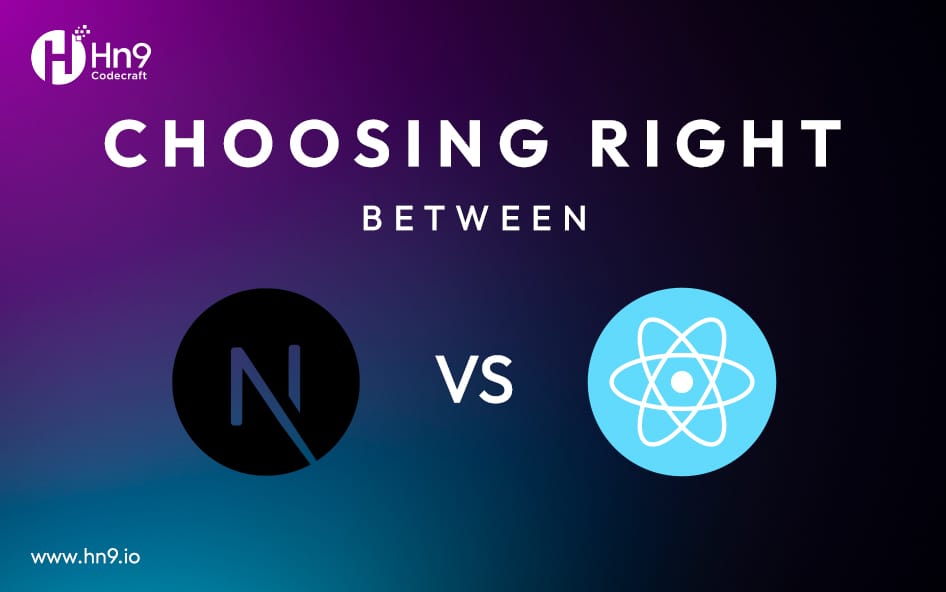As web development evolves in 2025, developers face an almost overwhelming range of options. Every year brings new tools and technologies, but some frameworks have managed to stand the test of time, such as React and Next.js. Both are immensely popular in the developer community, yet they serve different purposes and cater to various project needs. Understanding what each framework brings to the table can greatly influence your development journey.
React is a JavaScript library for building user interfaces, while Next.js is a React-based framework that enhances its capabilities, especially for server-side rendering and static site generation. The purpose of this article is to help you decide which framework suits your unique project requirements. Without a doubt, choosing the right framework is important for the success of your project. A poor choice can lead to performance issues, troublesome maintenance, or a steep learning curve. So, let’s take a closer look at both React and Next.js and hopefully, we’ll illuminate the best path for you to follow.
What is React?
React is a JavaScript library created by Facebook for building user interfaces. It allows developers to create reusable UI components, speeding up the development process and making code easier to maintain.
Key Features of React.js
- Component-Based Architecture: React allows you to build encapsulated components that manage their own state and compose them to make complex UIs.
- Virtual DOM: It minimizes direct manipulation of the DOM, resulting in a more efficient rendering process and improved application performance.
- Unidirectional Data Flow: Data flows in one direction, which makes it easier to understand how data changes affect your application.
React.js Advantages
- Large Community and Ecosystem: With its popularity, React has a vast community, ensuring an abundance of tutorials, libraries, and support.
- Flexibility: It enables you to integrate with other libraries and frameworks, offering freedom in how you set up your development environment.
- Rich User Interfaces: Perfect for building dynamic applications, React thrives in scenarios requiring interactive UI components.
React.js Drawbacks
- SEO Limitations: Since React is a client-side library, initial page loads can be less optimized for search engines without additional setup.
- Steeper Learning Curve: While learning React’s fundamentals is straightforward, mastering its ecosystem can be challenging for beginners.
- Frequent Updates: The library’s continuous evolution means keeping up with changes and new best practices can feel overwhelming.
What Are Next.js?
Next.js is a React framework created by Vercel that allows developers to build production-ready applications with server-side rendering, static site generation, and more.
Key Features of Next.js
- Server-Side Rendering (SSR): This feature generates HTML on each request, improving performance and SEO.
- Static Site Generation (SSG): Pre-renders pages at build time, making them faster to serve and often improving the overall user experience.
- Automatic Code Splitting: Next.js automatically splits your code into smaller chunks, meaning users only download what they need for the current page.
Next.js Advantages
- SEO-Friendly: The server-side rendering capabilities greatly enhance SEO, offering improved search engine visibility.
- Simplified Routing: Uses a file-based routing system that makes it easy to implement complex navigation patterns.
- Integrated API Routes: You can create API endpoints directly within the project, simplifying full-stack development.
Next.js Drawbacks
- Complexity Overhead: For small projects, the additional features of Next.js can introduce unnecessary complexity.
- Learning Curve: Even with its foundation in React, Next.js introduces new concepts that can take time to learn.
- Performance on Dynamic Pages: For applications with lots of user-generated content, you may still need custom solutions to manage performance.
React vs Nextjs: Which Framework to Pick?
Choosing between React and Next.js may seem tricky, but it largely depends on your project needs. For simple, interactive applications where you want more control over routing and state management, React can be your go-to. If your project demands better SEO, faster load times, or requires an integrated backend, Next.js likely has the edge.
Conclusion
In summary, both React and Next.js have their distinct strengths. React allows for great flexibility and component reusability, making it perfect for single-page applications. Meanwhile, Next.js provides powerful features for server-side rendering and SEO optimization, proving beneficial for more complex, content-managed applications. Ultimately, the choice will hinge on the specific requirements of your project. It’s essential to weigh your options carefully to choose the framework that best fits your needs and goals.
FAQs
1. What is the best frontend framework for 2025?
Choosing the best frontend framework depends on your project. Both React and Next.js have strong communities and toolsets for various applications.
2. Should I use Next.js or just React?
If your project requires strong SEO and fast loading times, opt for Next.js. For more interactive UIs without concern for SEO, React suffices.
3. Can Next.js replace React?
Next.js builds on React; it doesn’t replace it. You’ll use React within a Next.js application.
4. Which framework is better for e-commerce websites?
Next.js is often preferred due to its SEO capabilities and fast performance features.
5. Does Next.js replace React, or do they complement each other?
They complement each other. You’ll typically use React within a Next.js framework, benefiting from both.
6. Is Next.js suitable for small-scale applications?
While it can be used for small projects, its full potential shines with larger, more complex applications.




